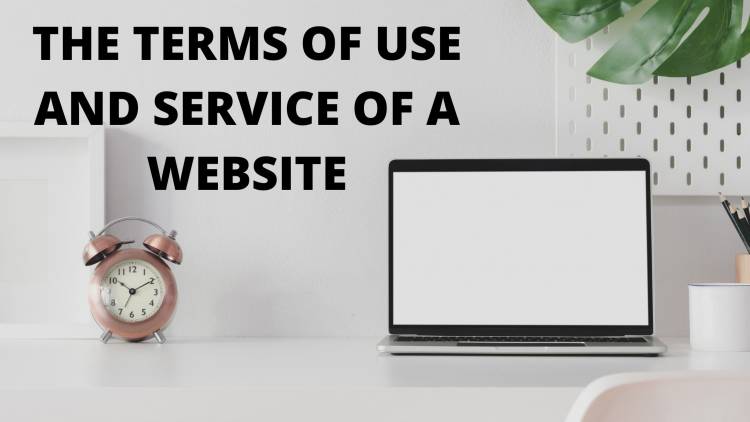The Most Successful Entrepreneurs Know How to Say ‘NO’. Here’s the one Exercise You Need to Learn This Skill
Success in entrepreneurship is often attributed to the hard work, innovation, and risk-taking ability of the entrepreneur. Still, the most crucial ability is knowing to say ‘NO’ often is an overlooked skill. This article delves into why saying ‘NO’ for an entrepreneur is crucial, which helps them focus on their role in maintaining focus, preserving resources, and making strategic decisions aligned with company goals. This article talks about the “Decision-Making Matrix” which is the most practical exercise to help entrepreneurs evaluate opportunities based on importance and urgency, thereby mastering the skill of saying ‘NO’.

INTRODUCTION
In entrepreneurship successful ventures are associated with effort, creativity and the taking of risks. In most cases existing talent is underutilized most especially the talent of saying NO. Saying ‘NO’ is all about time, money, energy, and essentially being smart when it comes to the objectives and visions of the company. This reveals that when you say ‘NO,’ this does not imply that you are being negative or being unnecessarily close-minded but rather it demonstrates that you are thinking positively for your business.
WHY IS IT IMPORTANT TO SAY ‘NO’:
· Preserve Focus and Energy: Today when the environment for the establishment and the development of new businesses is rather favorable, there are many possibilities and demands that might shift the attention of entrepreneurs to the undesirable objects. An event itself, be it a new project or a partnership, that comes in the way of the entrepreneurs can diffuse the attention and sap the energy of the entrepreneurs. This basically entails that to move the business to the next productivity level and get improved performances, the entrepreneur has to focus on the business mandates and try to work on the goals and strategies and sometimes has to say ‘NO’ to things that are interfering with the process.
· Protect Resources: Every business has its limited resources including time, money and the number of employees and an entrepreneur cannot endeavor on a number of projects with average results. Managers should know that sometimes, the key to being efficient is knowing what not to take – so that the resources would be better focused on the main goals set of the business, which would improve the amount of attention and effort that is invested in fulfilling those.
· Maintaining Quality: Every business to be a proper business, the quality of whatever they are selling should be their primary focus but when people are undertaking business, they tend to do more than what they can offer the quality is usually compromised. This can be improved whenever the entrepreneur sights limited and good projects, which in turn are maintained and yield the best kind of results. Gradually, this will improve the percentage of the customer.
· Strategic Alignment: Every business person /entrepreneur would have to clearly state its and, its mission, vision, objectives and how it plans to meet them, and not all opportunities out there are of interest to you. The use of ‘NO’ to opportunities that are not inline with the strategies or goals in the business and its values will make the entrepreneurs be loyal to their businesses and therefore lead to building of sustainable business success.
· Reduced Stress: To make the workload in such a manner that it results into better health of the employees and work-life balance. The self control problem can be managed if one learns to say ‘NO’. This would also lead to, the fact that entrepreneur would make correct decisions regarding their businesses and thus lead the business effectively thus leading to their stress being reduced.
THE ONE EXERCISE TO MASTER THE SKILL OF SAYING ‘NO’:
The best way an entrepreneur can denote readiness to say no then he/she can engage in an exercise that is referred to as the ‘Decision-Making Matrix’. This would enable the above mentioned entrepreneur to screen the opportunities presented to him against their significance as well as their contribution towards the achievement of the firm’s strategic directions.
· Define Criteria: The measuring stick that is to be employed in the formation of the business must be defined by the largest-scale vision held by the entrepreneur while reflecting the business’s values, goals, strategies, and its scarcity factors. The criteria should include:
o Resulting criteria should reflect strategic plans
o Depending on the statistic of return on investment
o Resource requirements
o Effect on incorporated projects
o Well-being
· Create Matrix: In order to ideate, the entrepreneur has to create four quadrants where one axis can be labeled as “Importance” and the other as “Urgency”. Categorizing the opportunity will be useful to the entrepreneur in understanding the relative importance and impending deadlines on any activity.
o Quadrant 1: Strategists also categorized importance and urgency into high importance/ high urgency and low, which presented the following results.
o Quadrant 2: Very important at the same time not urgent.
o Quadrant 3: For the cleared line, it will be low importance but high urgency.
o Quadrant 4: They expressed Least importance and Least urgency of the topics.
· Evaluate Opportunities: Before the entrepreneur engages him/herself in the opportunity, s/he must possess a list of opportunities, and rate them according to the criteria and place them in the right quadrant of the matrix.
· Prioritize and Decide: The proper management of the opportunities listed in the four quadrants is as follows: The opportunities that are important and urgent should be listed in Quadrant 1 hence these should be a priority The opportunities that are important but not urgent should be listed in Quadrant 2. Activities that fall under quadrant 3 should not be given much importance as they are not very important but are important when they are urgent; opportunities posted in quadrant 4 are not important and can be rejected or delayed.
· Practice Saying ‘NO’: From this analysis, declare ‘NO’ toward the opportunities that in one way or the other do not have the company’s goals or resources in mind. To begin with, it might be taxing sometimes, especially when it is from a client or a business associate. However, it is essential for any entrepreneurial entity to explain its decision. This can be done by:
o conductivity of the opportunity
o When declining the opportunity, provide a short reason why it has been turned down.
o Return an alternative message such as directing them to another person who could help.
EXAMPLE:
Consider yourself that, you are the CEO of a technology start-up company which provides solutions to curb IP violations. You have received several opportunities:
· A possible collaboration to work on the app jointly with a prominent IP firm (High Importance, High urgency).
· An invitation to deliver a speech at a tech conference that will be held in three months’ time (High priority, low urgency).
· A request from a small business to build an AI tool that meets its specific needs (Low on the priority list but, High priority).
· Suggest becoming a member of a non-healthcare related advisory board (Low Priority, Low Sensitivity).
When applying the decision-making matrix, the entrepreneurs are required to classify the opportunities appropriately and make proper decisions for the business. The partnership offer from the reputed IP firm should be the top-most priority and joining the non-industry advisory board shall be at the last in the priority list or can be politely refused. The conference invitation can be strategically planned accordingly and the request from small business to develop customized AI shall be declined or be delegated to someone else.
Overcoming Common Challenges:
· Fear of Missing Out: Currently, businesspeople fear that rejecting something could mean that something better is missed, which gives rise to FOMO. The idea that saying no to one opportunity imprints an end to every opportunity should not make entrepreneurs to counter it, so that they can concentrate on the long-term benefits of business.
· External Pressure: In some occasion, it becomes difficult for business people to say no, this can be influenced by the challenge from stakeholders or clients. In such conditions of no pay, stand firm in your decision to say ‘NO’ and let them know why you are reluctant to the deal and explain how this decision is good for your business in the long run, strategic plans, and how it fits your and the business objectives.
· Personal Discomfort: This is why the essence of entrepreneurship can be uncomfortable when the fear of disappointing other is there and saying ‘NO’. This feeling of discomfort can be easily avoided and eliminated over a long period of time that is via practice and preparation and at the same time can assist in the creation of assurance.
CONCLUSION:
In the case of an entrepreneur, the word ‘NO’ is one of the most powerful weapons throughout the extent of the business world as it contributes greatly to the success. As for the main issues that allow entrepreneurs to build more sustainable and beneficial business process, the main aspects are an aversion of diversions, finances and quality, strategic fit. The matrix exercise on decision making enables the students to comprehend the opportunities that come with it and the art of learning how to say ‘NO’.












